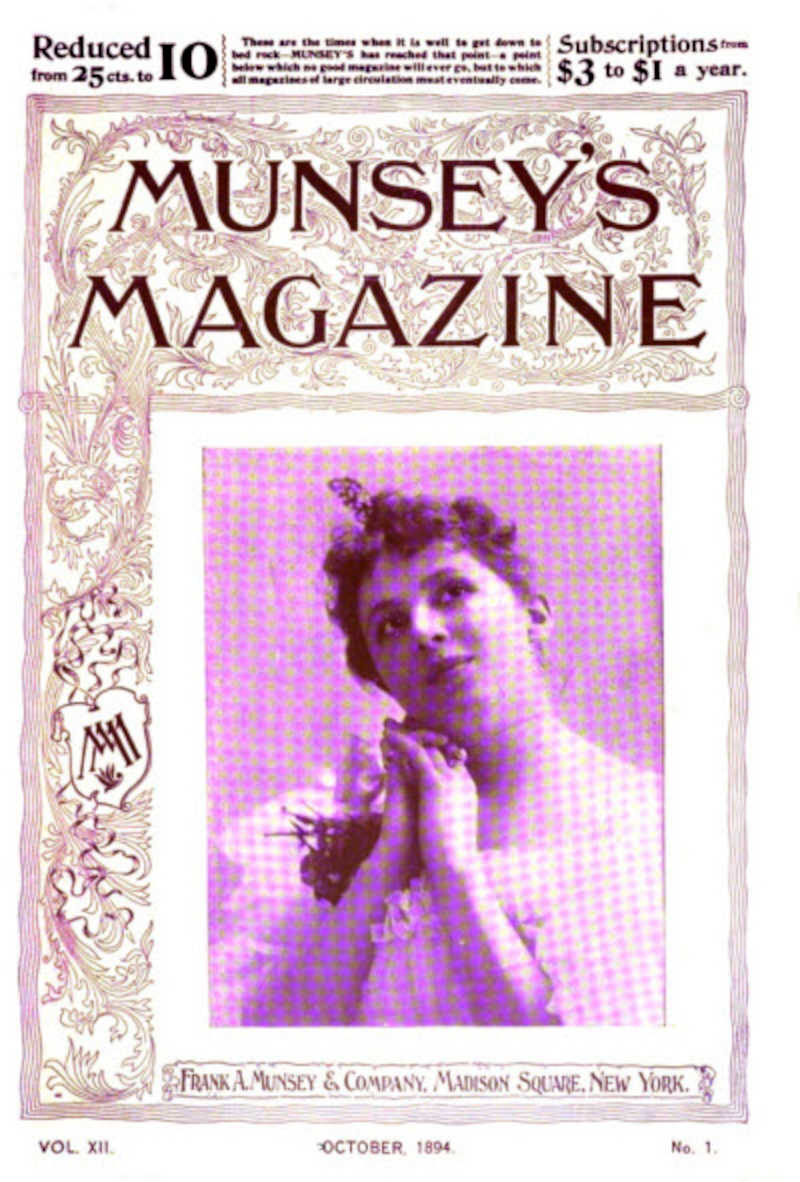Munsey’s Magazine

Munsey’s Magazine was an American magazine launched in 1889 by Frank Munsey. It was originally distributed as Munsey’s Weekly. It was a humor magazine. The first issue hit the newsstands 2 February 1889, priced at 10 cents.
Early issues of the magazine were edited by John Kendrick Bangs, an author and satirist who wrote several ghost stories and tales of the strange, some of which are available to read elsewhere on this site. However, Bangs found Munsey difficult to work with and did not remain editor for long. The final straw came when Munsey, who had already published his own work in The Golden Argosy [1], presented Bangs with a manuscript for his novel A Tragedy of Errors. Bangs rejected the story, but Munsey insisted he serialize it. Bangs did so, handed in his resignation, and left in June 1889. After Bangs’ departure, Munsey put the magazine into the hands of the same team he had handling The Argosy, and Munsey’s Weekly continued to be published without an editor for more than two years.
In February 1890, Munsey bought the competing humor magazine Time, and merged its subscription list with Munsey’s Weekly. At the time, he expected the move would almost double the magazine’s circulation. However, although the circulation increased from 26,000 it failed to reach 40,000. This was 10,000 less than Munsey had hoped for, and not enough to make Munsey’s Weekly a profitable publication.
In October 1891, Munsey changed the publishing schedule to monthly instead of weekly; Munsey’s Weekly became Munsey’s Magazine, and Richard Titherington became the new editor. Munsey also reduced the size of the magazine and increased its price to 25 cents. Then, in April 1892, he bought a general interest magazine called The Epoch and merged it with Munsey’s Magazine. Despite all these changes, Munsey’s Magazine continued to run at a loss.
At the back end of 1893, Munsey dropped the price of Munsey’s Magazine back down to 10 cents, resulting in a conflict with the American News Company (ANC), which handled magazine distribution. Munsey’s answer was to set up his own distribution company, resulting in furhter problems and debt. However, against all odds, the move eventually paid off and circulation increased considerably, peaking at 700,000 in 1897, by which time Munsey’s Magazine had a higher circulation than any other general interest magazine in the country.
Circulation began to slowly decline, but—thanks to a successful marketing campaign, launched in 1905—circulation of the magazine was close to 700,000 again in 1896. However, seven years later, it was down to 400,000, and the decline continued.
In 1921, Munsey’s Magazine switched focus, and became a fiction-only magazine, but this did little to stay the magazine’s ongoing reduction in sales. The last issue was published in October 1929.
Although Munsey’s Magazine was never a genre publication, as with other magazines of its era, it occasionally published ghost stories, horror stories, and works of speculative fiction. Examples include Ethel Watts Mumford’s “Siren Cottage” and Tod Robbins’ “Spurs“—the story that inspired the controversial movie Freaks (1932).
~~~
1. Another Munsey publication, The Golden Argosy was a weekly magazine for children, founded in 1882 by E. G. Rideout. Munsey was originally its editor. He acquired the magazine in 1883, after Rideout went bankrupt. Munsey later shortened the title to The Argosy. The publication is notable for being the first pulp magazine.
